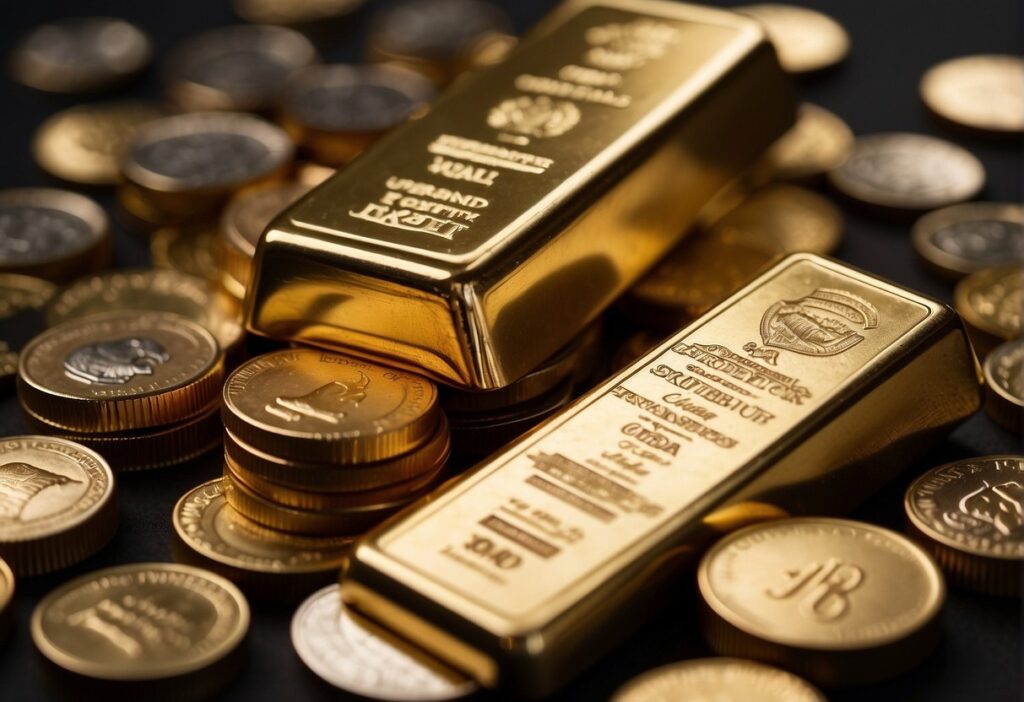|
Getting your Trinity Audio player ready...
|
Investing in precious metals has been a traditional method of wealth preservation and a hedge against economic uncertainty for centuries. When considering this form of investment, individuals are faced with a choice: to acquire and hold physical precious metals like gold and silver, or to opt for modern financial products such as Exchange-Traded Funds (ETFs) that represent the value of the underlying metals.
The tangible nature of physical metals can be appealing to those who value having direct control over their investments without the intermediary of a financial institution.
One of the primary considerations in this decision-making process is the underlying essence of the investment itself. Physical precious metals offer a level of security that is distinct from ETFs because the investor holds the actual metal. This can provide a more direct relationship with the investment and a sense of security, knowing it cannot be erased by a computer glitch or financial mishap.
On the other hand, ETFs offer a level of convenience and liquidity that is not typically available with physical bullion, enabling easier trade on stock exchanges. Both forms of investing carry their own set of advantages and considerations that align differently with each investor’s goals.
Key Takeaways
- Investing in precious metals offers a hedge against economic instability with differing strategies for direct ownership or through ETFs.
- Physical precious metals provide tangible security and direct control, aligning with the investment goals of those seeking a concrete store of value.
- ETFs afford liquidity and convenience, but investors must be aware of the limitations and added risks compared to physical metal ownership.
The Essence of Physical Precious Metals
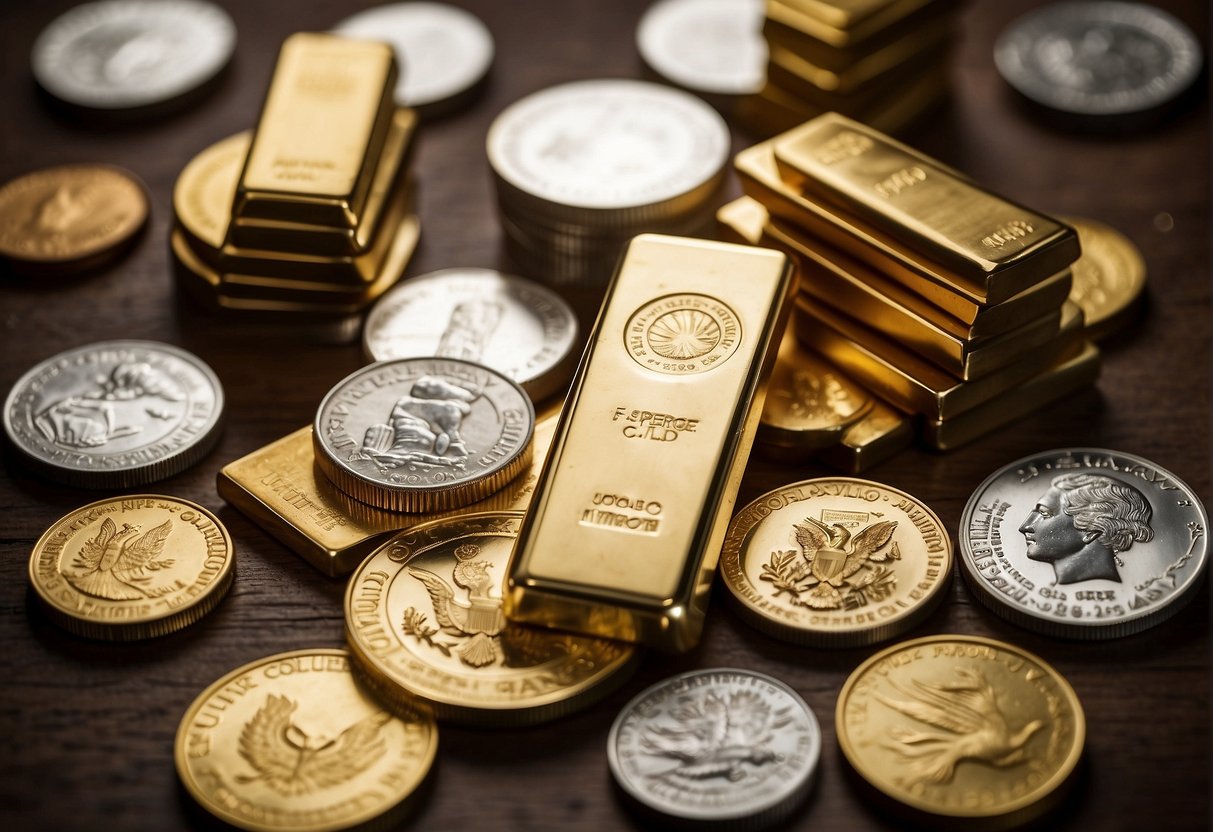
Tangible Asset and Intrinsic Value
Physical precious metals serve as a tangible asset, which means they hold an intrinsic value that is not dependent on someone else’s promise or obligation. Physical ownership of precious metals like gold and silver provides the holder with a measure of wealth that has been recognized for centuries. Unlike many other investments, precious metals do not degrade over time.
In periods of inflation or economic uncertainty, these metals have maintained their value.
- Gold: Long considered a symbol of wealth and a store of value.
- Silver: A versatile metal used in a range of industrial applications and investments.
- Platinum: Scarcer than gold and silver, often used in the automotive industry.
- Palladium: Mainly used in technology and as an investment vehicle, and is the rarest of the bunch.
Security and Counterparty Risks
One of the greatest benefits of investing in physical precious metals is the reduction of counterparty risks. This means that the investor’s asset is not dependent on the performance of a third party, such as a financial institution or other intermediaries.
In contrast to paper or digital investments, holding a physical metal means there’s no risk of theft via hacking or fraud that might affect digital transactions. Yet, physical possession does require adequate safety measures to safeguard against theft and can entail costs related to secure storage and insurance.
- Security: Physical metals need to be stored securely to prevent theft, which can include costs for professional vaulting services or secure home storage.
- Counterparty Risks: Unlike precious metal ETFs, physical metals have no promise or obligation from a third party, reducing the risk of loss due to default or institutional failure.
Comparing Physical Metals and ETFs
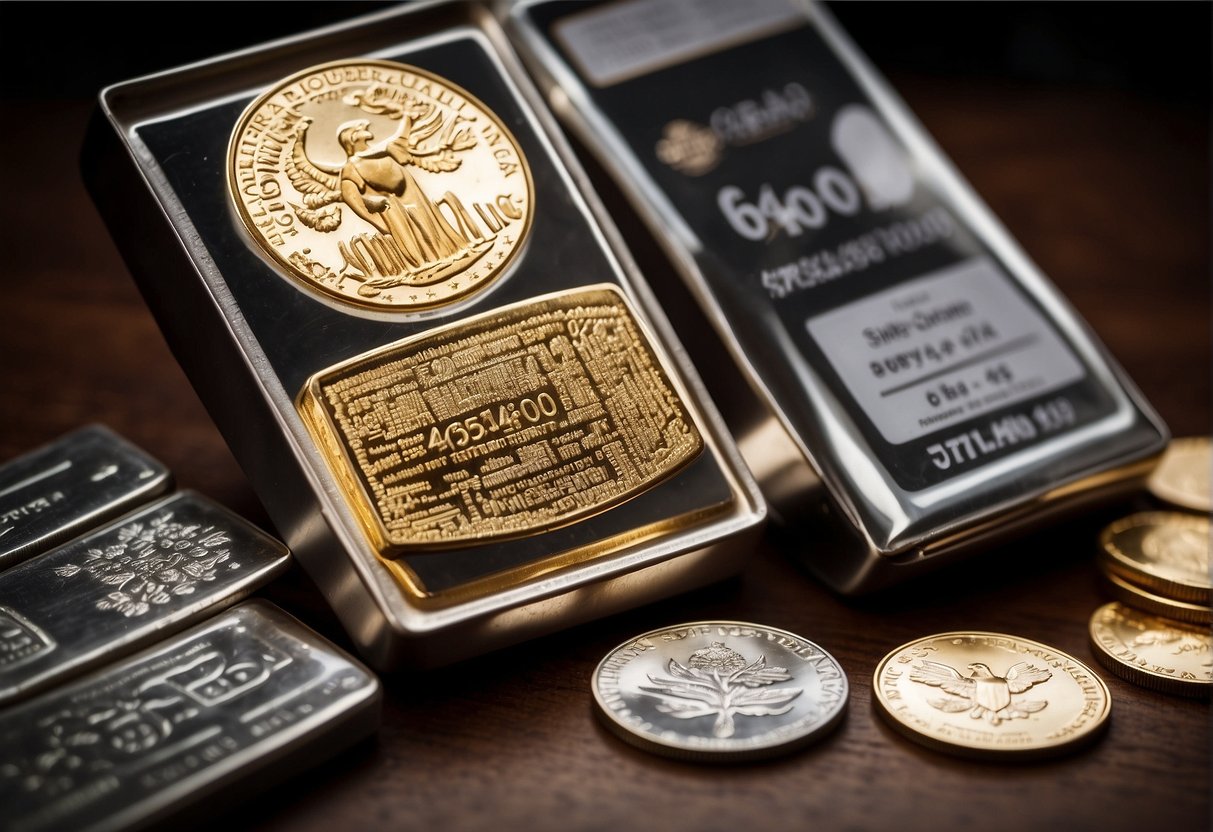
Liquidity and Ease of Trading
Physical bullion, such as gold or silver coins and bars, may be less liquid than ETFs because selling them typically involves a physical transaction.
In contrast, precious metals ETFs can be bought and sold rapidly within the financial markets, often making them more convenient in terms of liquidity.
The ease of trading ETFs becomes particularly advantageous during periods of market volatility, where investors may seek to quickly adjust their portfolios.
Ownership and Storage
Investing in physical gold or physical silver provides tangible assets that an investor can hold, but these come with the need for secure storage.
Storage can be at home or with a professional storage facility, and it often includes additional costs and risks.
ETFs, representing ownership of a portion of the underlying metal held by the fund, negate the need for individual storage but introduce a layer of separation between the investor and the actual physical bullion.
Costs and Expenses
The costs associated with physical metals include dealer premiums, potential shipping fees, and charges for storage and insurance.
Precious metals ETFs tend to have lower costs upfront due to the absence of physical handling, but investors must consider ongoing expense ratios and management fees.
Although an ETF may have a lower initial price point, these recurring expenses can add up over time, potentially impacting overall investment returns.
Investment Advantages of Physical Metals
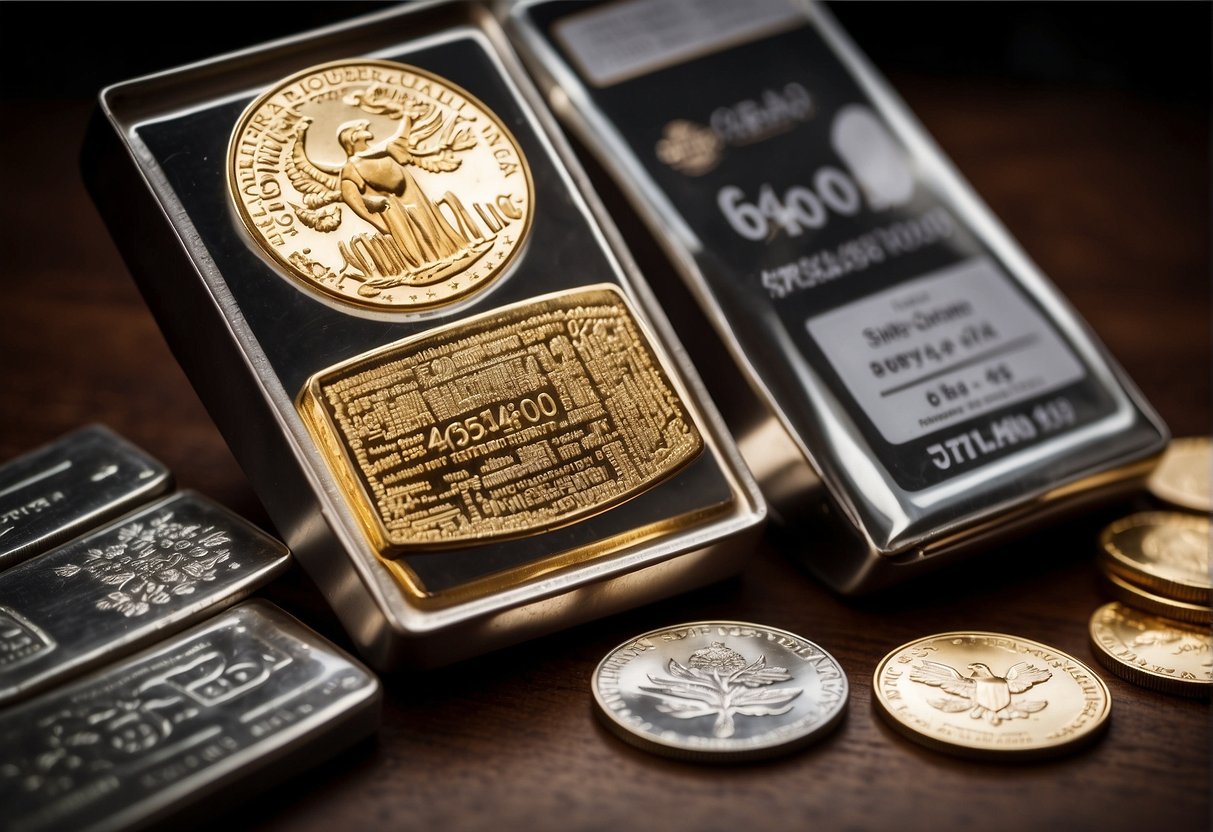
Hedge Against Inflation and Economic Uncertainty
Physical precious metals, such as gold and silver, have historically served as a robust hedge against inflation and economic volatility.
Unlike paper currencies that can be devalued by government actions or market trends, precious metals retain intrinsic value. During periods of inflation or economic downturns, metals often see an increase in value, providing a safeguard for investors’ wealth when other asset classes may be suffering.
Diversification and Performance
A diversified portfolio is essential for mitigating risk, and physical precious metals can play a crucial role in this strategy.
They often exhibit a negative correlation to stocks and bonds, meaning they can perform well when other investments decline.
Including metals in one’s investment portfolio can stabilize overall performance, as these assets can appreciate independently from traditional securities.
Long-Term Appreciation and Store of Value
Throughout history, precious metals have been sought after for their long-term appreciation and ability to act as a store of value.
While the precious metals market experiences fluctuations, over the long haul, these metals have maintained purchasing power.
They are a finite resource, with a value that is not eroded by time or the elements, making them an enduring asset for preserving wealth across generations.
The Pitfalls of ETFs in Precious Metals Investment
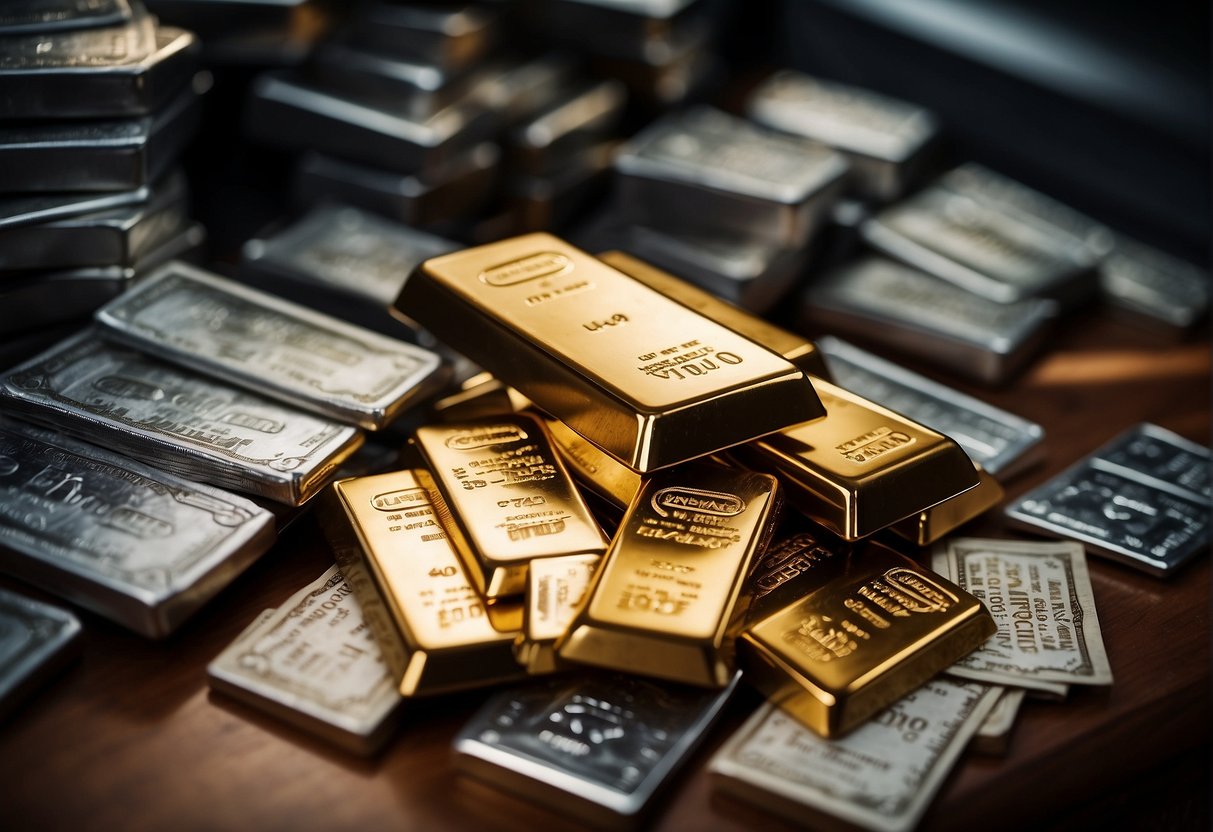
Volatility and Tracking Errors
ETF volatility can be significantly higher than the volatility of physical precious metals due to market speculation and rapid trading.
SPDR Gold Shares (GLD) and Silver ETF (SLV), while commonly traded, are susceptible to price volatility that can diverge from the actual metals’ market.
This divergence, known as tracking errors, could affect the investment’s performance, making it deviate from the expected movements of gold or silver prices.
Lack of Physical Ownership and Related Risks
Investing in ETFs like GLD or SLV grants the investor exposure to the precious metals prices, but it does not equate to physical ownership.
This distinction introduces counterparty risks, where the entity managing the ETF poses a potential liability to the investor.
Gold ETFs and Silver ETFs are effectively promises to pay the equivalent value, not the asset itself, reducing their effectiveness as a hedge against systemic risk.
Sector and Commodity ETF Limitations
Commodity ETFs, including those focused on the sector of precious metals, face limitations on how well they can replicate the market due to their structure.
They are often less liquid than the markets for physical assets, and regulatory or market factors can cap their expansion.
This constraint may impact investors with a lower risk tolerance, who may expect their ETF investments to adhere closely to the commodity’s performance.
Making an Informed Decision
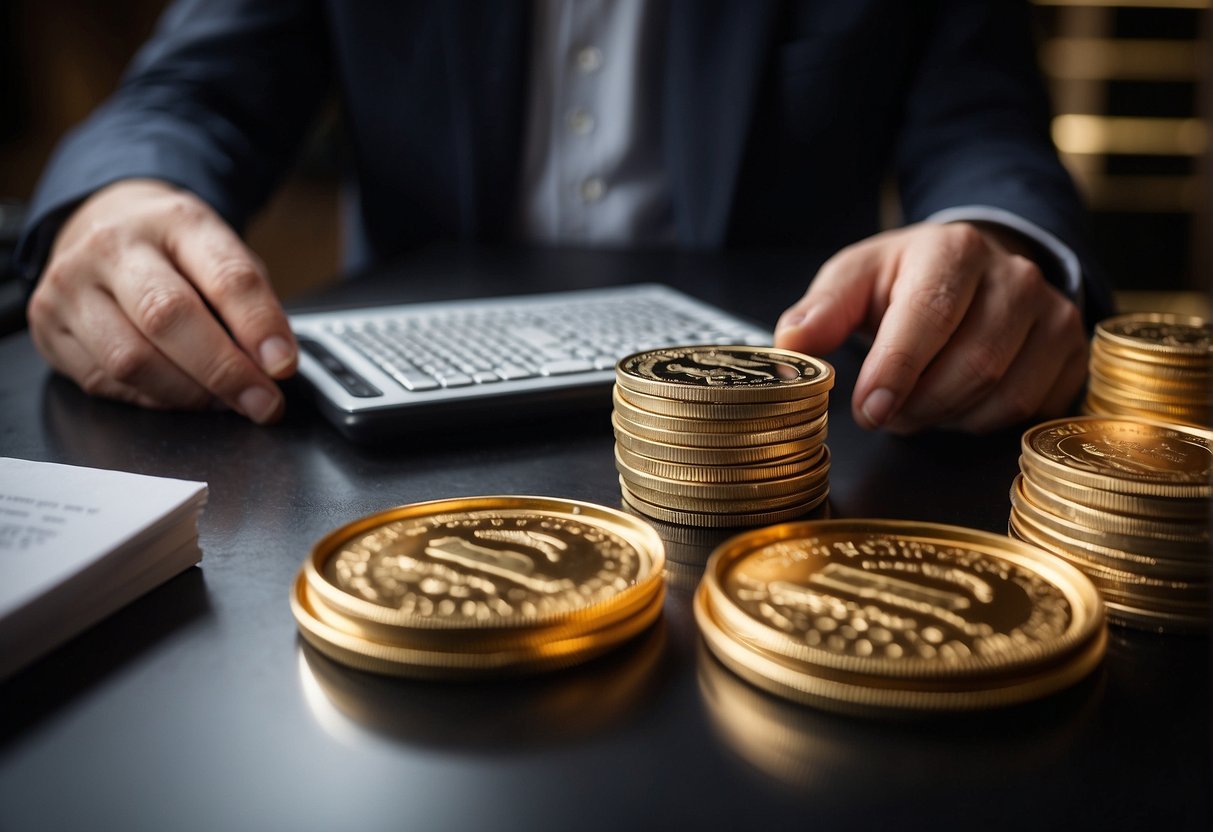
Understanding Investment Strategy and Goals
An investor needs to align their choice with their long-term investment goals and strategy.
For instance, holding physical precious metals can be a hedge against economic instability. These assets often retain value.
Conversely, ETFs offer exposure to precious metals’ prices without the need to physically store them. One’s risk tolerance and investment horizon are vital factors in this decision.
Examining Costs, Limits, and Performance Data
Investors should compare the costs associated with each investment option.
Owning physical precious metals involves:
- purchase premiums,
- storage costs,
- and potentially higher transaction fees when buying or selling.
ETFs might have lower initial costs, but investors pay annual fees, which can affect long-term performance.
Performance history is crucial. Understanding historical trends can help investors gauge potential volatility and returns.
Conducting Due Diligence and Recognizing Preferences
Conducting due diligence entails scrutinizing the purity, origin, and custody chain of physical assets.
Investors who prefer tangible assets may find satisfaction in owning physical metals, acknowledging both their intrinsic value and historical significance.
Alternatively, ETFs offer liquidity and ease of trading but come with counterparty risks.
This means if the fund manager faces issues, it can impact the investor. A preference for quick access to markets and lower holding costs may steer an investor towards ETFs.
Considerations for Selling and Liquidating Assets

Pros and Cons of Liquidating Physical vs. ETF
The decision to sell physical metals such as gold and silver or liquidate ETFs like SPDR Gold Trust or iShares Gold Trust can depend on fluctuating metal prices and the form of the assets.
Physical metals offer direct ownership and can be sold without a middleman, potentially providing a hedge during crises when trust in financial systems may waver.
Conversely, ETFs offer liquidity and ease of trade through online broker platforms. One must consider the pros and cons: physical metal sales may fetch higher premiums but are less liquid compared to ETFs, which can be traded rapidly but may involve higher broker fees or be subject to derivative market risks.
Privacy and Security Concerns
Privacy is significant when selling physical metals. Transactions can often be conducted discreetly without attracting the same level of scrutiny as ETF sales, which are recorded and tracked by exchanges and regulators.
However, physical assets require secure storage. Investors may need to insure and protect their investments, potentially incurring additional costs.
ETFs eliminate the need to physically store and insure assets but come with systemic security concerns linked to cyber risks and institutional trust.
Broker and Exchange Factors
Selecting the right broker or exchange is crucial when selling assets.
Physical metal sellers might need reputable dealers or personal networks, while ETF transactions are typically executed through an online broker or financial platforms. Each option has associated fees and commissions.
Moreover, brokers for physical metals may offer personal service but at the cost of potentially higher fees compared to the often more competitive rates offered by exchanges trading in ETFs.
Logistics of Buying and Storing Physical Metals
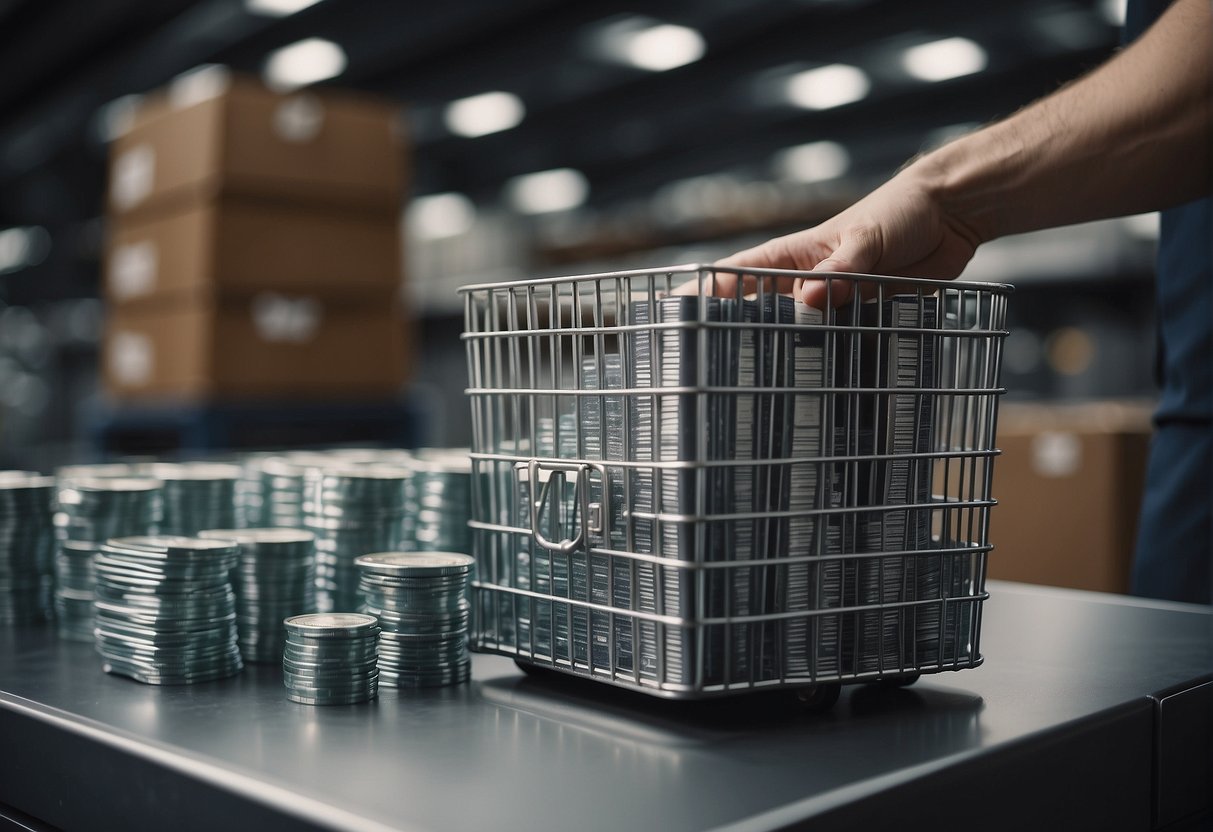
Advantages and Disadvantages of Physical Storage
Advantages of physical storage include having direct control over one’s investment.
Physical metals such as bullion and coins can be stored in a secure location of the investor’s choosing, which may be a personal safe or a secure depository. This tangible form of wealth storage is historically proven and can be independent of financial institutions, lending a sense of security.
However, the disadvantages are manifold:
- Security risks: Personal storage exposes the owner to theft or damage, necessitating additional insurance and enhanced security measures.
- Costs: Secure storage, whether at home or in a depository, incurs costs that can diminish investment returns.
- Liquidity: While physical metals are highly liquid as a commodity, accessing this liquidity may not be instantaneous, unlike their ETF counterparts.
Shipping, Insurance, and Handling
When purchasing physical metals, shipping is a critical step.
The metals must be transported securely and efficiently. Costs and logistics increase with the amount and value of the metal being shipped.
Insurance during transit is crucial to safeguard against loss or theft.
Handling precious metals also demands care.
The transfer from seller to buyer, especially for large amounts, often requires secure transportation services. Again, these services add to the total cost of the physical investment.
Trackable and insured shipping options are essential, and while they increase trust in the transaction, they also add a layer to the investment’s total expenses.
Frequently Asked Questions

What are the key differences between owning physical gold and investing in a gold ETF?
Owning physical gold means having the actual metal in one’s possession, giving a sense of security and tangible asset ownership.
In contrast, gold ETFs represent investment in gold price movements without holding the metal, providing ease of trading and no need for physical storage.
How does the performance of physical gold compare to gold ETFs over the long term?
The performance of physical gold often aligns with market gold prices, but without the ongoing fees associated with ETFs, which can erode returns over the long term. ETF performance also reflects management efficiency and fund expenses.
What are the potential risks associated with gold ETFs that might not be present with physical precious metals?
Gold ETFs can carry risks like counterparty and systemic risks, stemming from the digital nature of the investment and reliance on the fund’s management. Physical precious metals, being a direct investment, are not subject to these risks.
Can physical gold provide benefits during periods of market volatility that gold ETFs cannot?
During periods of market volatility, physical gold can offer benefits as a stable store of value that does not depend on the performance of financial institutions.
Gold ETFs, while reflecting the price of gold, are still subject to market fluctuations and liquidity issues.
Why might investors choose physical silver over silver-based ETFs?
Investors might opt for physical silver to avoid the management fees and potential tracking errors of ETFs. Physical ownership also provides personal control over the investment which is not impacted by the solvency of financial institutions or fund managers.
What are the tangible disadvantages of investing in gold ETFs instead of purchasing physical gold?
The tangible disadvantages of investing in gold ETFs include lack of actual ownership of the asset. There are also potential conversion fees if one decides to take physical delivery.
Another disadvantage is possible discrepancies between ETF performance and the spot price of gold. This is due to fees and fund structure.






